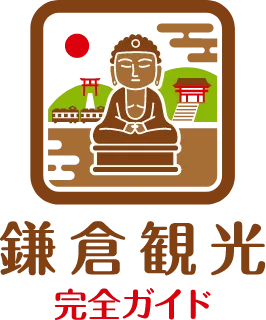Jomyo-ji Temple (浄妙寺)
Discover the History of Jomyo-ji Temple (浄妙寺)
Located in a serene valley on the eastern side of Kamakura, Jomyo-ji Temple was founded in the late 12th century as a Rinzai Zen temple. It was established by Ashikaga Yoshikane (足利義兼), a trusted warrior of Minamoto no Yoritomo (源頼朝), the founder of the Kamakura shogunate. Yoshikane was the brother-in-law of Hojo Masako (北条政子) and the forefather of the Ashikaga clan, which later established the Muromachi shogunate. The temple’s first head priest, Taiko Gyoyu (退耕行勇), also served at Tsurugaoka Hachimangu Shrine (鶴岡八幡宮) and taught Buddhist philosophy to figures such as Minamoto no Sanetomo (源実朝).
Scenic Highlights and Architectural Features
The temple grounds contain several historically significant monuments, including the Hokyointo Pagoda (宝篋印塔), believed to be the grave of Ashikaga Sadauji (足利貞氏), father of Ashikaga Takauji (足利尊氏), the first shogun of the Muromachi shogunate. There’s also a rock-cut tomb (yagura) thought to belong to Takauji’s brother, Tadayoshi (直義). The Zen dry garden at Kisen-an (喜泉庵) is a standout, with white gravel evoking flowing water and moss symbolizing mountains. The clear, delicate sound of the suikinkutsu (水琴窟), a buried water instrument, offers a truly Japanese aesthetic experience.
Spiritual and Cultural Significance
Jomyo-ji Temple flourished during the Muromachi period as the family temple of the Kamakura kubo (鎌倉公方), the shogunate’s regional deputy in the east. It holds the fifth rank among the Five Great Zen Temples of Kamakura and is a respected site in the Rinzai Zen tradition. It is also the ninth temple in the Kamakura 33 Kannon Pilgrimage, attracting many pilgrims and spiritual visitors.
Experiences and Local Flavors
At Kisen-an, you can enjoy a peaceful tea ceremony with matcha and wagashi (traditional sweets) while taking in the tranquil dry garden. For a different experience, the Ishigama Garden Terrace—a Western-style house built during the Taisho era—serves fresh-baked bread and afternoon tea. The building is preserved today as a cultural property of the temple.
Goshuin and Unique Traditions
To receive a goshuin (temple seal), please inquire at the reception just inside the main gate. It is not available in the main hall. The bold brushstrokes reflect the spirit of Zen calligraphy. Also of note is the Kamatachi Inari Shrine (鎌足稲荷), associated with Fujiwara no Kamatari (藤原鎌足) and the legendary “kama-yari” (鎌槍). One theory even links this legend to the origin of the name Kamakura (鎌倉).
How to Get There from Tosh’s Place (トシズプレイス)
From Kamakura Station, take a bus to the “Jomyoji (浄明寺)” stop and walk about two minutes. Be mindful that the place name (浄明寺) and temple name (浄妙寺) use different kanji. A morning visit is especially recommended for those seeking a quieter experience.
Best Time to Visit
Jomyo-ji Temple is captivating year-round, with fresh greenery in spring, satsuki azaleas in early summer, and colorful autumn leaves. If you’re staying at Tosh’s Place (トシズプレイス), take advantage of your free morning hours to visit the temple while it’s calm and uncrowded. Note that the temple is closed in the evening, so plan your visit during opening hours.
Nearby Attractions
Within walking distance, you can explore historic temples such as Hokoku-ji Temple (報国寺) and Sugimoto-dera Temple (杉本寺). Kamakura-gu Shrine (鎌倉宮) and Egara Tenjinsha Shrine (荏柄天神社) are also nearby, making it easy to follow a spiritual route through Kamakura’s eastern district. If you feel like a longer walk, head down toward the Yuigahama (由比ヶ浜) coastline.
Who Should Visit?
- Anyone interested in Zen Buddhism and spiritual reflection
- Visitors who enjoy tea and quiet garden views
- History lovers fascinated by the Ashikaga clan and Kamakura heritage
- Travelers looking to escape crowded sightseeing spots
- Creative minds wanting to draw or photograph serene landscapes
- Guests with flexible schedules who enjoy tranquil morning walks
Wrap-Up: A Quiet Slice of Kamakura with Zen Aesthetics
Jomyo-ji Temple offers a serene gateway into Kamakura’s Zen heritage and Ashikaga lineage. With dry gardens, a suikinkutsu’s subtle melody, and peaceful tea moments, it’s ideal for stepping away from the everyday. If you’re staying at Tosh’s Place (トシズプレイス), you’ll find that early mornings are the perfect time to experience the temple at its quietest.
Whether you’re on a spiritual journey or simply seeking calm, Jōmyō-ji is one of Kamakura’s most rewarding hidden gems.
